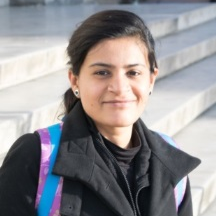Advances in Ferroelectric and Piezoelectric Thin Films: Synthesis, Properties and Applications
A special issue of Coatings (ISSN 2079-6412).
Deadline for manuscript submissions: closed (31 December 2020) | Viewed by 7740
Special Issue Editors
Interests: lead-free piezoelectric materials; ferroelectric and multiferroic materials: bulk, thin film, nanostructures; mechanical energy harvesting; electro/magnetocaloric effects; energy storage; nanoscale properties of functional materials via scanning probe techniques; ferroelectric liquid crystals
Special Issues, Collections and Topics in MDPI journals
Interests: ferroelectrics; piezoelectrics; ferroelectric domains; scanning probe microscopy; Raman spectroscopy
Special Issues, Collections and Topics in MDPI journals
Special Issue Information
Dear Colleagues,
We would like to invite you and appreciate your contribution to this Special Issue of Coatings entitled “Advances in Ferroelectric and Piezoelectric Thin Films: Synthesis, Properties, and Applications”.
Functional materials like ferroelectrics and piezoelectrics find a wide range of applications, including memories, radio frequency and microwave devices, pyroelectric, piezoelectric sensors and actuators, photovoltaic, and in many other systems. The understanding and integration of functional materials into devices require a multidisciplinary approach encompassing the ideologies across various fields of physical science and engineering. There has been an unprecedented advancement in theoretical and computational models, synthesis, and characterization, thereby enabling researchers to explore the recently recognized applications of ferroelectric and electromechanically active materials—from high energy storage devices to flexible energy harvesting systems. Environmental concern along with miniaturization and integration of electronic devices is escalating the need for new, sustainable, and improved materials.
This issue aims to summarize the recent advances in thin film and nanoscale ferroelectric and piezoelectric materials, with subject matters ranging from synthesis, growth, their related functional properties, and device fabrication. Authors are invited to submit original research, critical review articles, or short communications focused on but not limited to these topics:
- Lead-free piezoelectric;
- Flexible mechanical/piezoelectric energy harvesters;
- Pyroelectric and electrocaloric effect;
- Ferro/piezoelectric polymer nanocomposites;
- Ferroelectric thin films for high energy storage devices;
- Domain structure and local piezoelectric properties;
- Domain and domain wall engineering;
- Thin films of organic and MOF ferroelectrics.
Dr. Indrani Coondoo
Dr. Denis Alikin
Guest Editors
Manuscript Submission Information
Manuscripts should be submitted online at www.mdpi.com by registering and logging in to this website. Once you are registered, click here to go to the submission form. Manuscripts can be submitted until the deadline. All submissions that pass pre-check are peer-reviewed. Accepted papers will be published continuously in the journal (as soon as accepted) and will be listed together on the special issue website. Research articles, review articles as well as short communications are invited. For planned papers, a title and short abstract (about 100 words) can be sent to the Editorial Office for announcement on this website.
Submitted manuscripts should not have been published previously, nor be under consideration for publication elsewhere (except conference proceedings papers). All manuscripts are thoroughly refereed through a single-blind peer-review process. A guide for authors and other relevant information for submission of manuscripts is available on the Instructions for Authors page. Coatings is an international peer-reviewed open access monthly journal published by MDPI.
Please visit the Instructions for Authors page before submitting a manuscript. The Article Processing Charge (APC) for publication in this open access journal is 2600 CHF (Swiss Francs). Submitted papers should be well formatted and use good English. Authors may use MDPI's English editing service prior to publication or during author revisions.






